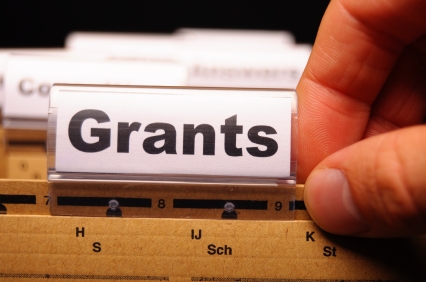The last few weeks of the year are a good time to take stock of things and at the same time look ahead to the coming year. Nonprofit organizations rely to some degree on the ability to secure grants in a usually very competitive market. The better prepared the organization is for the active grant submission season, which ordinarily starts in the first couple weeks of the new year, the better off they will be as the year progresses. A little bit of planning and preparing information can make the process much easier and potentially more lucrative.

1. Determine Your Objectives
Looking towards the new year, a nonprofit organization should decide what will be funded with grants. Special projects in particular are good for grant proposals, but there are foundations that will provide for operational funding. Your nonprofit organization has to be careful that any project to receive grant funding is related closely to your mission statement.
For example, a 501(c)(3) that is dealing with drug counseling should not try to fund a literacy program. It will be very important to have budget figures both for the organization and for the proposed grant. Lack of this information will place any proposal in jeopardy. Identifiable need is also going to be critical. This means during the final weeks some research into the issue is necessary. If possible, survey information ought to be collected from the target population to justify a grant request.
Also read: How to Use Grants.gov to Get the Best Government Grants
2. Consider a Boilerplate for Your Proposals
A great idea is to develop a boilerplate grant proposal. This is one that tells what objectives are to be funded, and gives a general idea of how the money is going to be spent. It is called a boilerplate because this document is going to be used for numerous grants during the coming year.
The way to use a boilerplate is to alter the language with each submission to fit the objectives of the funding organization. Budget figures are going to be the same for every submission, so those do not have to constantly be re-written. The text of the boilerplate, however, will be continually revised. Having this draft document will save you an awful lot of time and effort, and make submission a much quicker process.
3. Identify New Grantors
Foundations have websites, but it can take a lot of research time to find out whether or not a proposal submission is worthwhile. The Foundation Center has an excellent directory of all types of foundations and funding sources. You can research foundations by giving objectives, location, and size of awards. An organization has to have a subscription to access the main information, but this is a very worthwhile expense (The Foundation Center is currently offering discounted subscriptions until January 6, 2014).
You also have to keep in mind the restrictions that a foundation or other grantor has imposed on grant awards. It often happens that a foundation limits its awards to a particular geographical region. For example, a number of corporate foundation will only award grants in those places where corporate employees work. Foundations will on occasion suspend grant giving, so it is important to find out when was the last time a foundation actively gave awards.
Also read: Digital Fundraising Strategies For Your Next Fundraiser
4. Take a Moment for Education
A small nonprofit organization may just be starting to work on grant proposals, yet not really have a good idea of what to do. The final weeks of the year is a good time to learn more of the ins and outs of writing a fundable grant proposal. There are resources on the Internet which can be used to learn more about the grants process, and a number of foundations and community groups will sponsor grants writing workshops. The time spent learning about the process can be worth thousands of dollars in grant awards.
The end of the year is no time to sit back and relax. The holiday season can be fun but has to be a time of making decisions for the coming year. The best possible outcome for the season is that on January 1 the nonprofit organization is ready to actively send out grant proposals addressing real issues with solid evidence to support the request.
